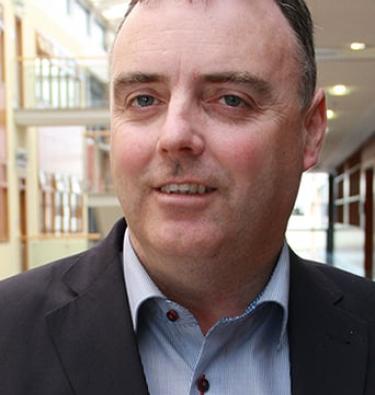
Our homes should be places of stability and security. Yet, for a significant portion of the population, particularly in social housing, the air they breathe indoors poses a silent threat. Poor Indoor Environmental Quality (IEQ), encompassing issues like dampness, mould, and inadequate ventilation, is a critical societal challenge in Ireland, affecting approximately 24% of all households. This insidious problem disproportionately impacts vulnerable populations, including older people and children, leading to severe health consequences. Dampness and mould, for instance, can elevate a child's risk of respiratory issues like asthma by a 50%. Furthermore, indoor air pollutants, often from burning solid fuels, are linked to an estimated 1,600 premature deaths annually in Ireland.
Traditionally, addressing IEQ issues has been reactive, with social housing bodies responding only after problems manifest. This approach is costly, inefficient, and, most critically, fails to prevent the adverse health outcomes suffered by residents. What is needed is a paradigm shift, a move from reactive action to proactive prevention, safeguarding the health of communities before serious issues arise. Researchers at Dublin City University are helping to lead this change with the Sustainable Homes Integrating Non-Intrusive Environmental Sensors (SHINE) project.
A proactive approach
The SHINE project addresses the critical societal challenge by examining how IEQ is managed in social housing. Led by the PI Dr Valesca Lima and co-PI Prof Stephen Daniels from DCU School of Law and Government and School of Electronic Engineering, with Clúid Housing as Societal Impact Champion, SHINE is developing a low-cost, data-driven system that uses non-intrusive environmental sensors to monitor indoor conditions continuously. This innovative approach can empower social housing providers to identify and address potential problems like mould growth or poor air quality before they become severe, and in this way improving tenant health and reducing maintenance costs. The team also includes Dr Tracy Ildefonso, Joseph Mullally and previously, Pranay Tikoo.
The project's methodology is inherently interdisciplinary, linking cutting-edge technology with crucial social insights. It combines expertise in sensor technology and Internet of Things (IoT) systems with a deep understanding of stakeholder engagement, tenant empowerment, citizen engagement and the policy landscape surrounding housing and health. This comprehensive approach ensures that the technological solutions are not only effective but also user-friendly and truly meet the needs of residents.
Promising initial results
During its initial phases, the SHINE project has made significant strides in developing its core technological infrastructure. Initial testing, both in laboratory settings and controlled home environments, has generated promising results. The system demonstrated its capability to accurately detect the early indicators of mould risk, a critical step towards proactive intervention. Early detection capability is a game-changer, moving beyond visible mould to anticipating its formation based on real-time environmental data.
In the context of a severe housing crisis, the idea is that the project helps to preserve the quality and longevity of existing social housing stock, a crucial factor when new builds are scarce and social housing waiting lists remain extremely long. By contributing to making social housing more sustainable and healthier, SHINE supports the broader goal of providing high-quality data for policy recommendations to be undertaken to improve housing quality and respiratory health in those living in social housing. This work directly addresses issues of housing and environmental justice, ensuring that vulnerable populations in social housing have access to appropriate, decent and healthy living environments, a fundamental right often overlooked in the face of housing shortages.
Foundation for wider impact
Continued work involves iterative adjustment of sensors and risk models based on further real-world data, ensuring optimal accuracy and reliability. Crucially, the team will focus on comprehensive documentation and training materials.
The projected impact of SHINE is strong because while it is helping to shift social housing providers to a proactive maintenance model, the project promises to significantly enhance the health and well-being of thousands of residents. Children and older people, particularly vulnerable to poor IEQ, stand to gain immensely from healthier indoor environments. Beyond well-being related impacts, SHINE has the potential to contribute to more sustainable housing by reducing high costs associated with reactive maintenance and extensive remediation work. It also focuses on a collaborative approach with project participants and stakeholders for proactive problem-solving, Technical and policy innovations developed here can also serve as models for other
housing sectors, broadening the project’s impact. The project’s current activities and updates can be found in the project's webpage here and associated LinkedIn and Bluesky accounts.








